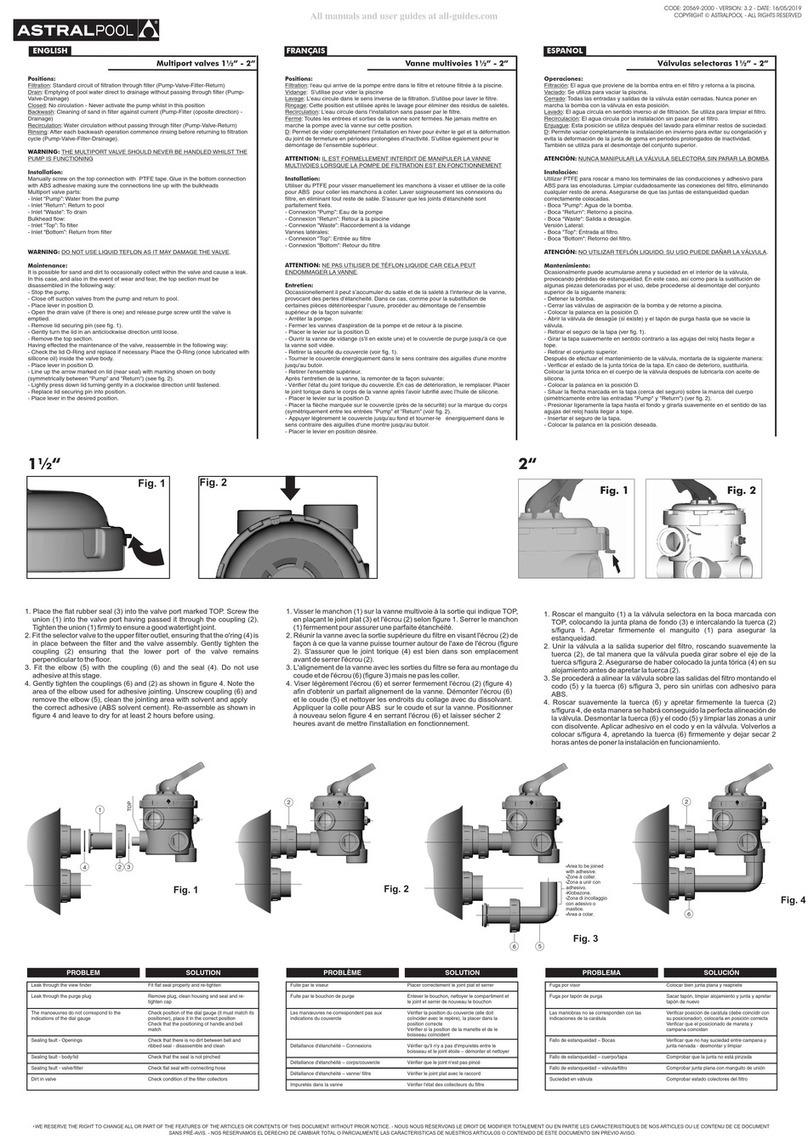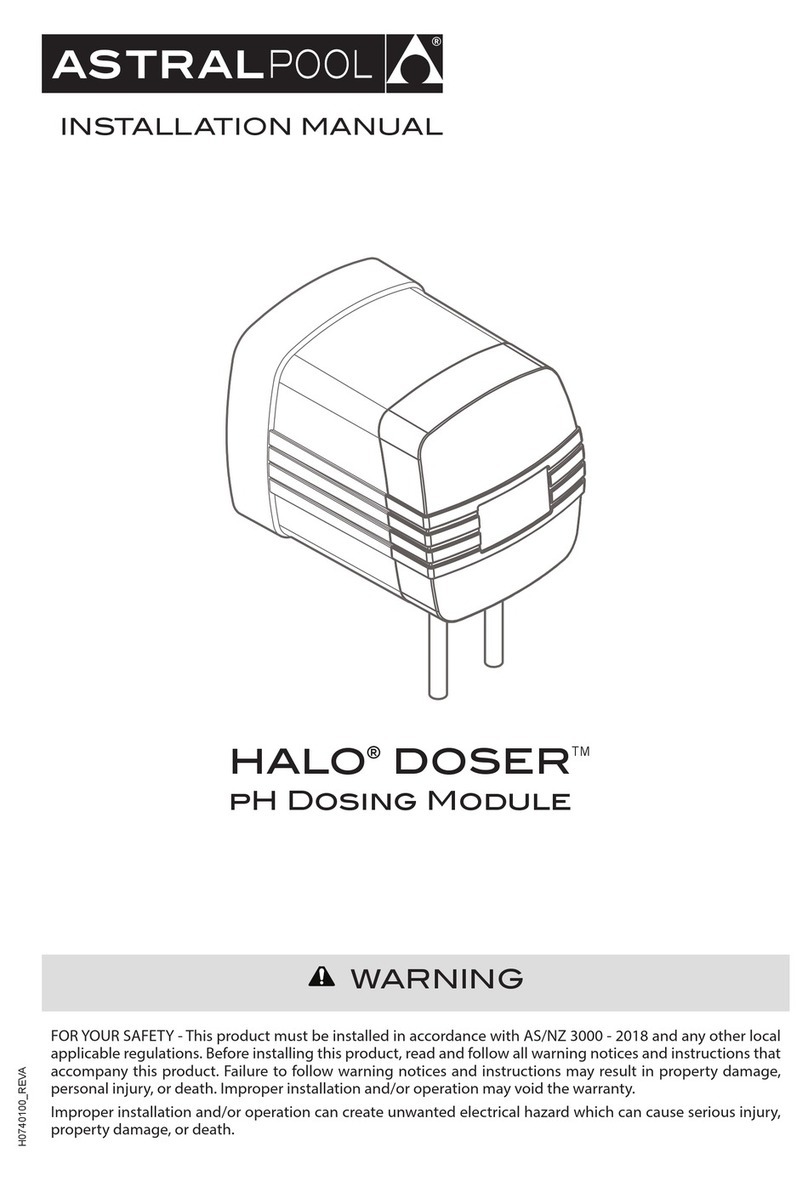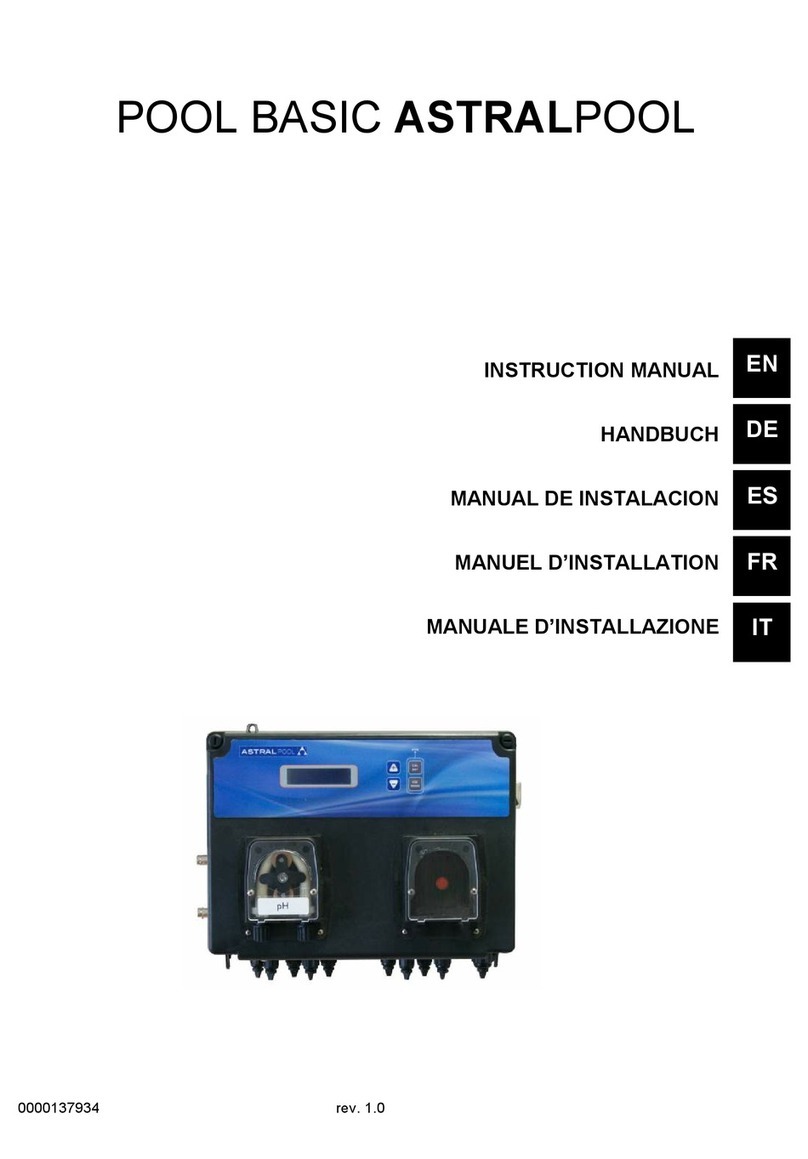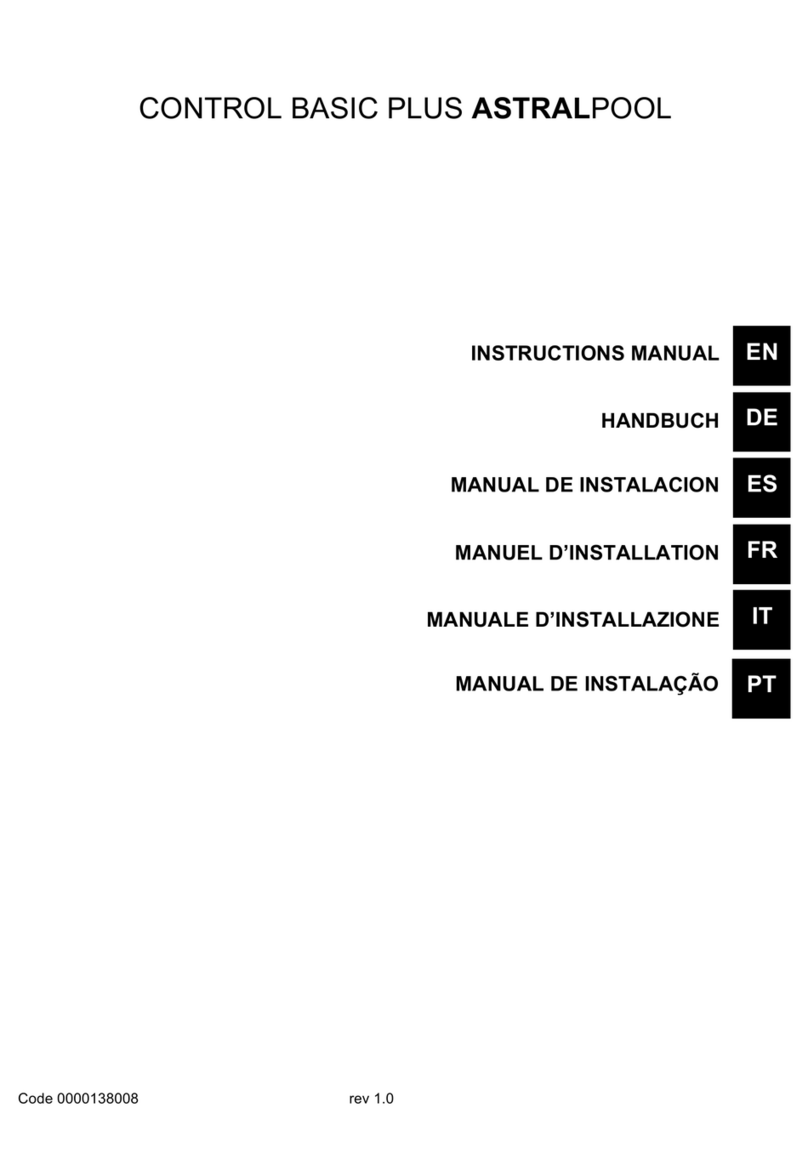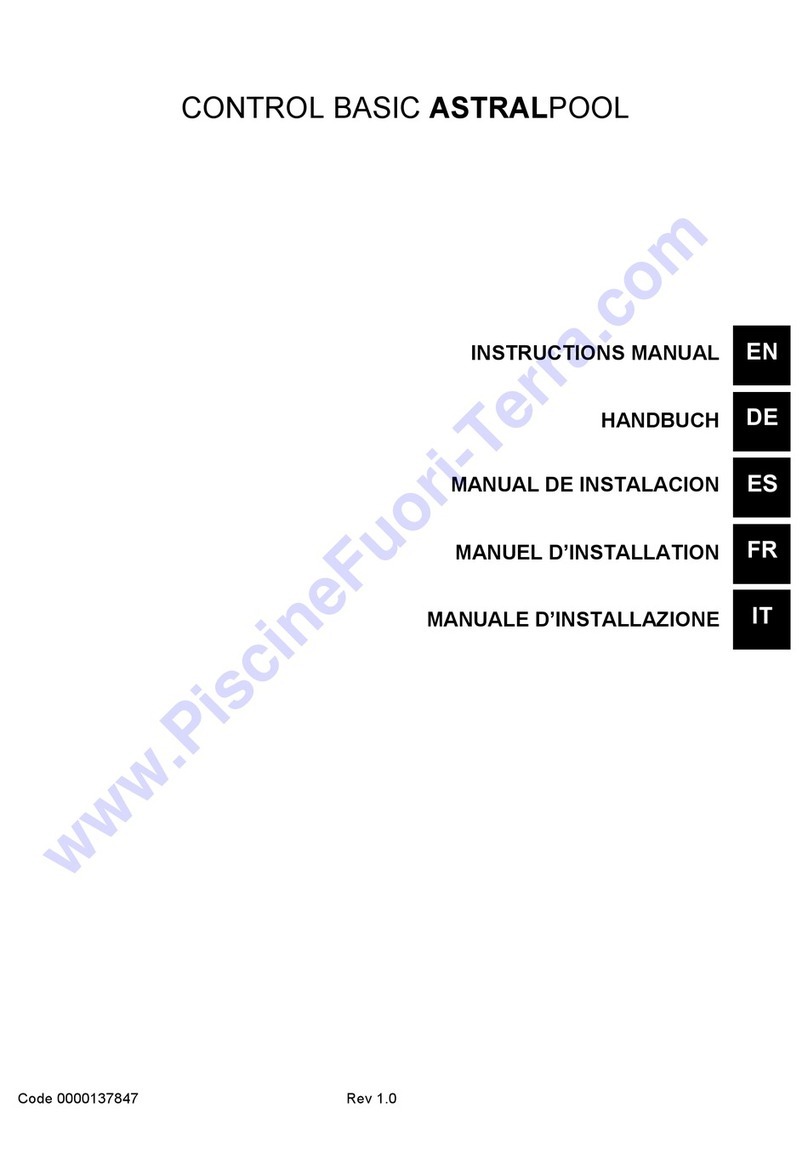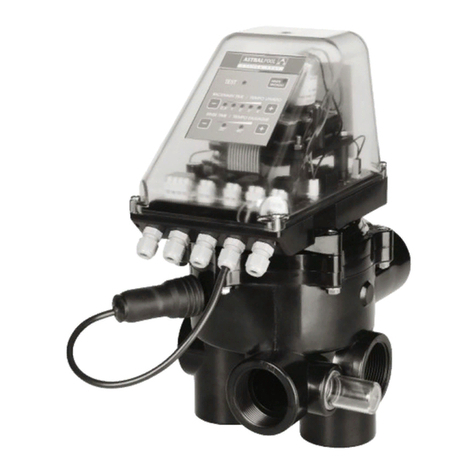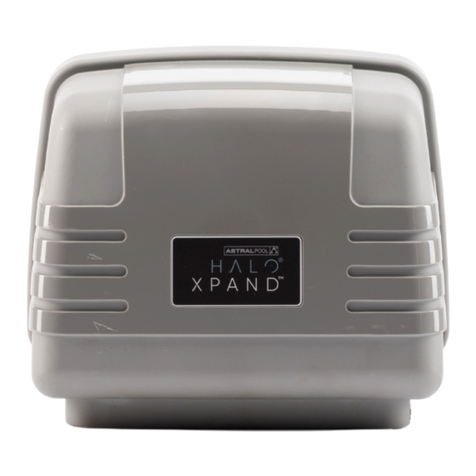
5
ENGLISH
ADVICE DURING INSTALLATION AND ASSEMBLY OPERATIONS.
During the connection operations of the electrical wiring to the valve modules, great attention must be
given to polarity, and it must be veried that pieces of wiring are not left inside after closing.
Make all connections by following the instructions in this manual.
It should be veried that the electrical wiring connections to the valves electronic card are rmly made.
The seal on the module’s box should be checked for correct positioning to prevent the entry of water, it
should also be checked that the compression gland is also correctly located and that the cables are of a
correct length. Cover the unused compression glands to ensure the IP grade.
Particular attention should be paid, so that, under no circumstances, is it possible for water to enter the
electronic module. In the case where the intended use is not that for which the valve was designed,
adaptation and supplementary technical regulations may be necessary.
ADVICE FOR WHEN PUTTING INTO SERVICE.
Before putting the automatic valve into service, it is necessary to verify the calibration of the electrical
protection devices in the operations cabinet and that they are correctly positioned and xed in place.
NOTE: It is recommended that the bathing facilities are not used while the ltration equipment is in
operation.
ADVICE DURING INSTALLATION AND MAINTENANCE WORK.
Nationalinstallationregulationsmustbetakenintoaccountwhenassemblingandinstallingtheautomatic
valve. Extra care must be taken so that it is not possible, under any circumstances, for water to enter the
automatic valve electronic circuit.
All contact, including accidental, must be avoided at all times with the moving parts in the automatic
valve during operation and/or before complete shutdown.
Before carrying out any maintenance or any other electrical or electronic work, it must be ensured that
switch-on devices are locked.
Itisrecommendedthatthefollowingstepsbetakenbeforeperforminganymaintenanceontheautomatic
valve.
1.- Remove electrical power to the valve.
2.- Lock the switch-on devices.
3.- Verify that there is no electrical power being applied to the circuits, including auxiliary and
supplementary services.
This list must be considered indicative and not binding with respect to safety, there may be other specic
safety standards in particular regulations.
IMPORTANT: due to the complexity of the situations covered, the instructions for installation, use
and maintenance contained in this manual, do not make any attempt to cover all possible service and
maintenancecases.Ifadditionalinstructionsarenecessaryorspecicproblemsarise,pleasedonothesitate
in contacting the distributor or the valve manufacturer directly.
Our automatic valves may only be installed in swimming or other pools which fully comply with the HD
384.7.702 standard. When any doubt exists a specialist should be consulted.
Please check the packing contents.
